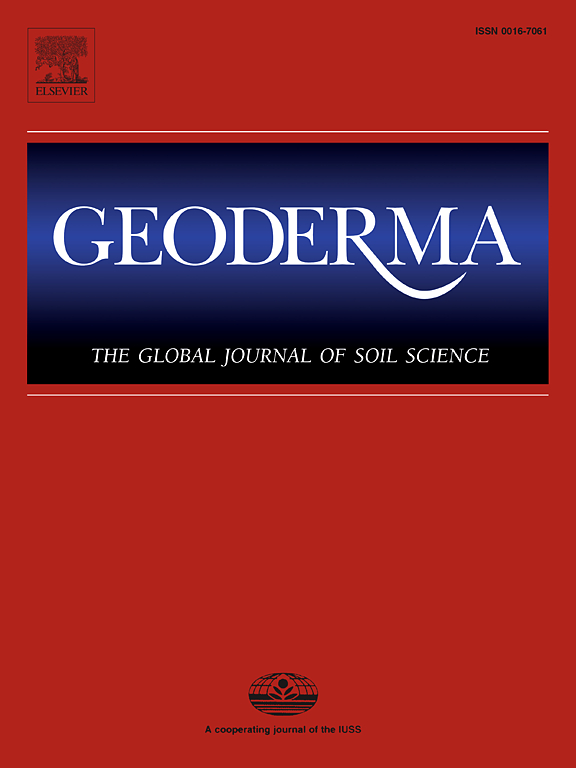Significant advances in plant-available and replenishable macro- and micronutrients with soil health-oriented conservation farming: Novel insights from a multi-site on-farm evaluation
IF 5.6
1区 农林科学
Q1 SOIL SCIENCE
引用次数: 0
Abstract
While conservation farming practices are known to increase soil health and ecosystem functioning, little is known about their effect on nutrient availability. In this study, we conducted an on-farm evaluation of conservation farming advances in plant-available and replenishable macro- and micronutrients.
Therefore, three different management systems (conventional farming, conservation farming, and an adjacent field margin as reference system) at 21 sites were sampled at three soil depths (0–5, 5–20 and 20–35 cm), and plant-available and replenishable nutrients were extracted by electro-ultrafiltration and subsequently measured by absorption and emission spectrophotometry.
Conservation farming systems significantly increased both plant-available and replenishable nutrient fractions as compared to conventional farming systems. In particular, both fractions of Norg, P, S and K were strongly elevated through conservation farming; plant-available S contents in the conservation farming system were even higher than in adjacent field margins. Using multiple linear regression analyses, we could further show that microbial necromass is significantly positively linked to both plant-available and replenishable N, Norg, P and S contents, suggesting that this agriculturally manageable microbial fraction is highly important for nutrient availability and replenishment. Moreover, soil pH, cation exchange capacity and soil organic carbon contents strongly influence plant-available and replenishable cations such as N, P, Ca, Mg or B.
Through a more targeted fertilization management (as in the case of S and B) and significant soil health advances (i.e., higher soil organic matter contents, better soil structure), conservation farming systems provide a solid foundation to ensure long-term, sustainable crop production.
求助全文
约1分钟内获得全文
求助全文
来源期刊

Geoderma
农林科学-土壤科学
CiteScore
11.80
自引率
6.60%
发文量
597
审稿时长
58 days
期刊介绍:
Geoderma - the global journal of soil science - welcomes authors, readers and soil research from all parts of the world, encourages worldwide soil studies, and embraces all aspects of soil science and its associated pedagogy. The journal particularly welcomes interdisciplinary work focusing on dynamic soil processes and functions across space and time.
 求助内容:
求助内容: 应助结果提醒方式:
应助结果提醒方式:


